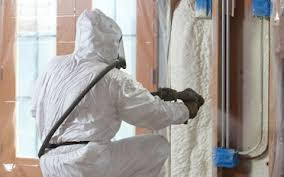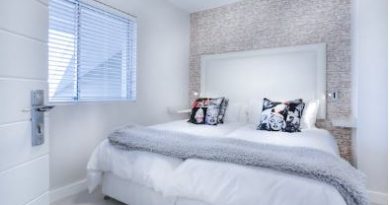Is Laminate Flooring Worth the Cost?
Laminate floors rank among the best home improvement innovations over the past half century. Initially intended to be an affordable substitute for floor tiles and real wooden floors, laminate floors are simple to maintain and clean. They come with modern designs and look virtually identical to real materials as well, but for a much lower price tag. Better still, most DIYers will have no problem laying this type of flooring. Generally speaking, the different styles of laminate are installed simply by slotting the planks together – no fasteners or glue is needed. Actually, the hardest thing to do is select a product, which is what we will cover next.
How to choose the best laminate flooring for your home:
Laminate flooring comes in two different types. Each type has a package of planks, roughly a quarter of an inch in thickness, which slot together. The wooden design consists of real wood layers stuck together, with every layer at right angles to the one above and beneath it, for improved stability. The layer on top is made from good quality thin hardwood, with an acrylic coating. In contrast, plastic laminate is entirely artificial, with a melamine layer at the bottom, a fiberboard (saturated with resin) in the middle, and a wood grain print at the top with a protective layer of hard, clear plastic.
The wooden design is for traditionalists, who like the appearance of natural wooden floors. Typically, this is twice the price of a plastic laminate floor. The thin upper layer of hardwood on these designs make them vulnerable to scratches, stains and dents. However, unlike plastic laminate floors, they can be restored a few times with meticulous refinishing and sanding. Due to this, these designs are longer lasting than plastic laminate floors, as long as they are situated away from high wear and water prone areas. If you intend to put your property on the market in the near future, bear in mind that buyers might like the appearance of genuine wood.
People who opt for plastic laminate flooring usually want the floor to look wooden, in places that get severely abused or wet. The plastic internal parts and robust topcoat make this laminate flooring highly durable. It can withstand animal claws, dampness, sand encrusted footwear and inline skates far better than the wooden design. The wood grain prints look extremely realistic on modern products too.
What’s an AC Rating?
When choosing the best laminate flooring for a room, the AC rating is a vital consideration. This measures the product’s durability. AC5 is the highest rating and is normally used for commercial purposes. AC1 is the smallest rating and used for areas with low traffic. There’s laminate flooring available for all rooms, whether they are rooms that require waterproofing, like the bathroom, or high footfall areas like the kitchen.
For bathroom decoration, check that the laminate is properly sealed and laid to avoid mold and rot, and that it has a water resistant core. In areas with higher traffic, like landings and hallways, thicker laminates are most suitable. If you intend to put large furniture on the laminate flooring, speak to a professional and purchase the correct underlay to avoid damage. Also, it is crucial to use the correct underlay if you want to lay laminates over underfloor heating. Most laminates are suitable for this, however check that the manufacturer specifies this, to prevent inefficiency or damage before you purchase.
What Does Laminate Installation Cost:
Laminate flooring costs can be as low as $6.00 per square foot for some basic planks according to this cost calculator, with a six millimeter thickness, from a DIY warehouse or online flooring vendor. If you opt for a higher quality product, normally eight millimeters to twelve millimeters, you will pay about $9.00 per square foot. As a rule of thumb, laminate floorings reflect their price tag. Frequently, ‘bargain basement’ laminates are too shiny and smooth, and too artificial in appearance. In addition, the cheaper products tend to warp, stain and peel, due to the inferior materials they are made from.
The more costly products have attractive wood grain finishes, bevelled edges and embossing to produce a more genuine appearance. High quality laminates are robust, scratch, dampness and stain resistant, and still more affordable than solid wooden alternatives or you can look into glazed terracotta tiles. The warranty is another variable that affects laminate flooring cost. Typically, if you pay more, you will get a longer warranty because the manufacturer is confident in the product. The following things will be included in the installation cost of your laminate floor, most of the time:
-Labor — This includes installing the laminate floor and potentially, replacing or repairing the current subfloor. The cost of labor will rise when rooms are an unconventional shape, because this complicates the cutting procedure. Also, you might incur extra expenses if furniture needs to be moved from the room.
-Supplies and Materials — The laminate will have to cover the room’s square footage. An extra ten percent will be added to these measurements, to account for cutting and installation around curvy edges, etc. An underlay made from foam is needed as well.
-Cleaning up — Before the laminate flooring is installed, your contractor will have to remove and dispose of at least one layer of current flooring. Most contractors will charge you per square foot.




